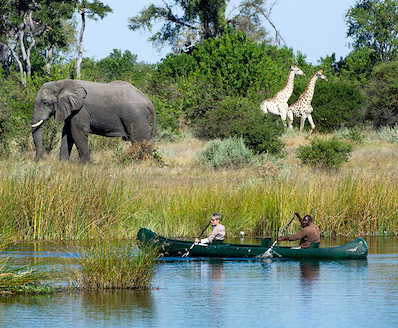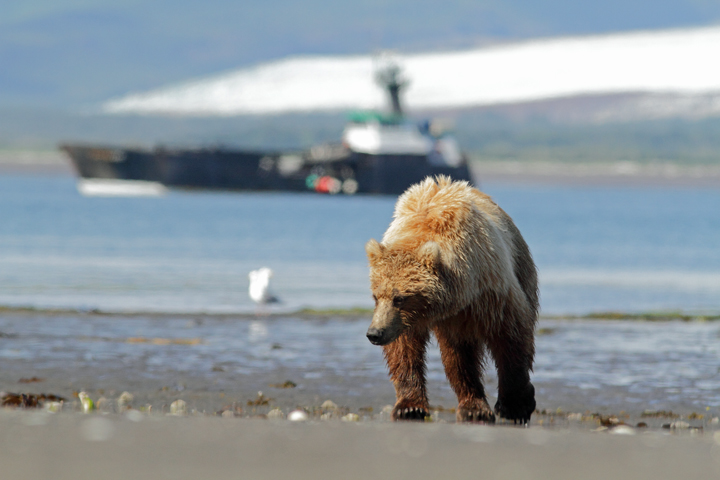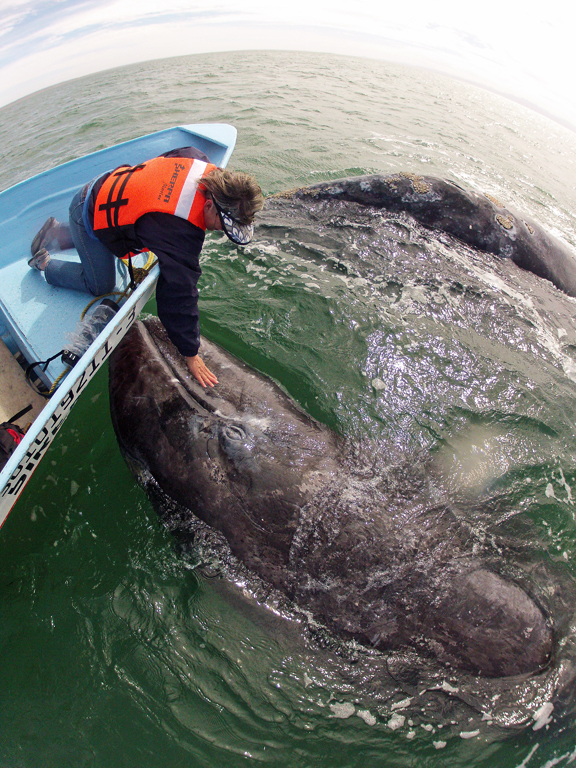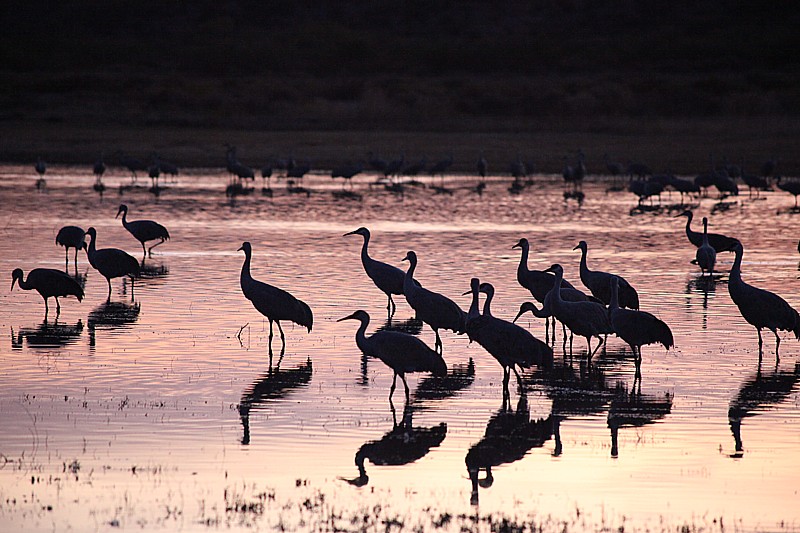
SAUSALITO, CA – “All the world loves a lover,” mused American thinker, Ralph Waldo Emerson. That being said, with Valentine’s Day around the corner, here’s a week’s worth of romantic and beautiful courtship rituals of the wild kingdom.
Wild Planet Adventures, the recognized experts in viewing wildlife through habitat-sustaining practices, call these rituals “animal Valentines.” Following are founder Josh Cohen’s personal favorites.
1) Gibbons: Nature’s Great Crooners: For these tree-top swingers, marital harmony begins with sonic harmony. Each morning, males and females of these Asian apes sing love duets to each other as the mist burns off the rainforest. The duet is repeated in such precise sequences that it often takes newlyweds many months to learn to make beautiful music together. In a duet between a male and a female, the female’s part is a long, rising series of notes that end in a fast “twitter”. The male’s song is less complicated. He grunts, squeals and whistles in delight.
And the best place to see Gibbons in the wild: From an exotic treehouse in Thailand. Wild Planet Adventures suggested trip: Thailand – Ultimate Wildlife 15-Day EcoTour (also 11 days) starting at $4,498 per person double.
2) Tarsiers – Tiny Tenors: These tiny, uber-cute, wide-eyed primates also use sound as part of their courtship rituals, but these are performed by the male. During courting, potential partners often chase each other around while making distinctive soft sounds. The male, if aroused, will escalate his sound within five minutes of merely looking at an attractive female. The female, if receptive, will display her genitals invitingly; however, if she is not sufficiently wooed, she’ll emit an antagonistic call, often followed by biting and pushing the male away. Ironically, when mating begins, they maintain complete silence. Once bonded, Tarsiers are extremely vocal and make loud shrieks with their partners. In fact, they call in harmony, with each partner making its own distinct sounds.
Best place to see Tarsiers in the wild: Borneo. Wild Planet Adventures arranges special nocturnal expeditions to see both Tarsiers and Slow Loris on Borneo – Weird & Wonderful Wildlife 12-Day EcoTour at $6,496 per person double.
3) Resplendent Quetzel: Beauty with Equality: Perhaps the most beautiful of all birds, the resplendent quetzal sports gorgeous two-foot-long green tail feathers, a red breast, blue sides and green crown. In February, just in time for Valentine’s Day, males begin an elaborate courtship ritual to entice females. In a dazzling display of color and sensuality, they circle in the sky with their long tails dancing behind them, then dive down to the cloud forest treetops in hopes of attracting females. By March, once a mate has been selected and the mating process is underway, males can easily be seen sharing nesting duties with females, alternating guarding the eggs every half hour, including sitting on them.
Best places to see Quetzals: Monteverde Cloudforest on Wild Planet Adventures Costa Rica – Ultimate Wildlife 14-Day EcoTour (also 10.5 and 9-day tours) starting at $4,998 per person double. La’ Amistad National Park, in Panama is another on Panama – Ultimate Wildlife 10-Day EcoTour (also available in 8 days) starting at $3,998 per person double.
4) Tigress – Saving Herself for True Love? Female tigers distinguish between true love and “friends with benefits”. Normally tigers take as long as a full day to develop mutual confidence, through ritualized purring, playing and moving their tails left to right with spring in their steps. Once the tigress has developed confidence, she will roll over on her back in a playful manner, rub her face, and move closer to the male tiger, who will mount her. Their climax is signaled by a loud roar. Then the tigress turns her head and takes a swipe at the tiger with her foreleg. The tiger instinctively takes evasive action. The tigress then rolls over her back to facilitate insemination. However, if the tiger is a transient male just passing through the area and its dominance is not clearly established, the tigress will treat him like a “friend with benefits”, engaging in “false mating”, but not rolling over on her back.
Best places to see Tigers in the wild: Kanha National Park, India. Wild Planet Adventures suggested trip is India – Ultimate Wildlife Safari 19-Day: Leopards, Tigers & Palaces (other itineraries offered) at $7,498 per person double. Bardia National Park in Nepal is another great destination for tiger viewing. Untamed India & Nepal 19-Day Wildlife Safari is the trip to take.
5) Giraffes – Nature’s Great Neckers: Male Giraffes will establish dominance by swinging their heads and necks at each other, followed by a longer period where they will caress one another with their necks and then actually have sex, including reaching climax. Interested females also rub their necks against potential mates as part of their courtship. Recently, researchers also observed adolescent giraffes performing a complicated, prancing, dance-like step that some observers have compared to the fox-trot. Could giraffes be nature’s greatest romantics?
Best place to see Giraffes in the wild: Zambia. The trip: Zambia – Ultimate Wildlife 18-Day Safari (also 15, 12 and 10-day programs) at $13,998 per person double and less. Here you can see a journey of giraffes right from your luxury tent, and perhaps view a live birth on a unique walking safari.
6) Waved Albatross – Kissing Fools: The complex and expressive courtship ritual of waved albatross includes extensive kissing and bill-fencing, in which the partners bend, face each other in an exaggerated upright posture, open their bills wide and shut them with a loud clap, often alternating with rapidly clattering their bills or slapping them back and forth. If that isn’t strange enough, they will also bow and circle each another while swaying their heads from side to side in an exaggerated manner. The newer the pair, the longer and more elaborate the dance.
Best place to see Waved Albatross: Ecuador’s Galapagos Islands. The trip: Galapagos – Ultimate Wildlife Cruise – M/Y Eric, Letty and Flamingo at $4,100 per person double.
For detailed itineraries, exciting wildlife photos and video galleries and booking information, visit http://www.wildplanetadventures.com/, call 1-800-990-4376 or email [email protected].
Wild Planet Adventures Receives ‘World’s Best 50 Trips’ Award
In April 2014 the editors of National Geographic Traveler bestowed its fifth “World’s Best 50 Trips” award to Wild Planet Adventures for its “On the Jaguar’s Trail; from the Pantanal to the Amazon” wildlife safari in Brazil. Past awards have recognized their programs in India, Thailand, Panama and Zambia.
The expert wildlife guides of Wild Planet Adventures go the extra mile to explore remote wildlife habitat and study wildlife patterns in destinations not often accessible to the general public. Thanks to the company’s comprehensive itineraries that balance diverse and complex ecosystems and habitats, guests enjoy wildlife and game viewing that is carefully aligned with animals’ seasonal, daily and nocturnal migrations.
Following a philosophy that interacting with nature has the power to transform lives, tours are conducted in Africa, Baja, Belize, Borneo, Brazil, Costa Rica, Galapagos, India, Laos, Nepal, Panama, Peru, Thailand and Zambia. Wild Planet Adventures is recognized by top publications in the travel industry for its itineraries that combine intimate encounters with wildlife and local culture.
For more travel features, visit:
www.examiner.com/eclectic-travel-in-national/karen-rubin
www.examiner.com/international-travel-in-national/karen-rubin
travelwritersmagazine.com/TravelFeaturesSyndicate
goingplacesnearandfar.wordpress.com
‘Like’ us on facebook.com/NewsPhotoFeatures
Twitter: @TravelFeatures
New: Moral Compass: Great Places to Go Where the Going Does Good
moralcompasstravel.info
Check out our newest travel site for special deals, insiders’ tips at tidbitts.com: www.tidbitts.com/karen-rubin/where-in-the-world




